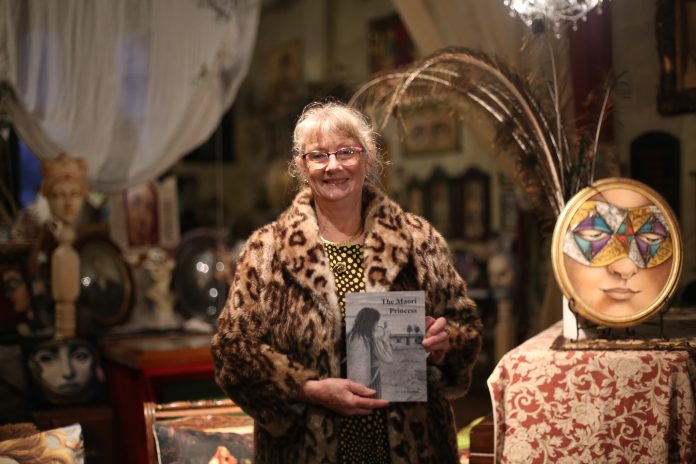
Growing up, Liz Heenan had always been told her family descended from a Maori princess.
What started as a quest to find evidence of a link to Pinana Te Atua, the great-great-granddaughter of Ngai Tahu paramount chief Turakautahi, has ended in a book not only about Heenan’s family history, but also early New Zealand history.
The Kakanui woman did not set out to write a book, but the more she discovered about her family history, the more she was motivated to tell the story of the life and times of her ancestors — both Maori and Pakeha.
She discovered not only a connection to Te Atua, the Maori princess, but that she was also related to missionary John King, who came to New Zealand with Samuel Marsden to set up a mission in 1814. King’s son, John Wheeler King, had a child with Te Atua, by the name of Elizabeth King.
The Maori Princess, written by Heenan, was released this month.
Told through the eyes of her ancestors — both Pakeha and Maori — it was a story of courage, adventure, hardship, love, loss, endurance and utter devotion to the Christian mission cause in early 19th century New Zealand, Heenan said.
‘‘It is also a story of growing respect and acceptance of two different cultures, through interdependence in a time of great danger among social and political change,’’ she said.
‘‘This is real people’s stories, and how it affected them. And it’s the only way I could tell their story, because a lot of the time there was so little about them personally, but they were in the places at certain times, so I was able to tell the stories around them, which kind of brought them alive.’’
Heenan, who lives in Kakanui and previously owned The Manor Estate in Oamaru, started her research as the 2014 bicentenary of the landing of Marsden’s missionaries approached.
She had very little information on her family history, and she knew very little about New Zealand history.
‘‘I was never taught New Zealand history . . . so it was a real introduction to the proper Kiwi history.’’
Heenan’s search for information took her from Riverton to the Bay of Islands.
In some cases, there were several different accounts of things that had happened, and occasionally, Heenan presents several different versions of stories in the book.
‘‘Because it just shows how difficult it is to sort of nail down the story.’’
A lot of the history in the book is told through diary entries, including those of John King. Reading King’s diary and letters at the Hocken Collections was the ‘‘most amazing experience’’, she said.
‘‘Really, it was quite an emotional moment for me.
‘‘You could almost hear his voice in the end — and it really brought the people to life.’’
Some of what she discovered was ‘‘pretty shocking’’. When she found out her Maori ancestors practised cannibalism, she called her mother to ask if she should share the information publicly.
‘‘She said, ‘Look, it’s the truth. You have to tell it. It’s our history’.’’
There were many Waitaki connections in the book. Heenan’s family settled in Purakaunui and worked out of Moeraki in the whaling era. Her great-great-grandmother’s husband was in charge of a whaling boat for the Weller brothers.
While the story was told through her ancestors’ eyes, Heenan believed it would have a wider appeal.
‘‘Between 1700 and 1900, that history there will affect thousands of people who live in the South Island, and then they can use that as a platform to do their own family history.’’
Heenan was unable to locate a photo of Te Atua, but the Maori princess still features on the cover of the book, a Dunedin artist drawing her based on what was known about her.
Heenan was pleased with how the book had come together, and very grateful to everyone who helped her. Former Oamaru Mail reporter Jacquie Webby edited the book, and her input and enthusiasm was invaluable, she said.
The process had been very worthwhile for Heenan and her family, who took a lot of comfort in knowing where they came from, and their place in history, now.
‘‘I suppose in a way I’m more sort of settled and content, because I know background now.
‘‘And the other exciting thing that’s happened from it is that I have met other people that are related to me.
‘‘I’ve got a whole new family out there from the other lines of the heritage, so that’s been really exciting and just knowing where I come from, where the Maori stories have come from.’’
The Maori Princess is self-published and 700 copies have been printed. The book can be ordered from Heenan by emailing lizhee@farmside.co.nz.




